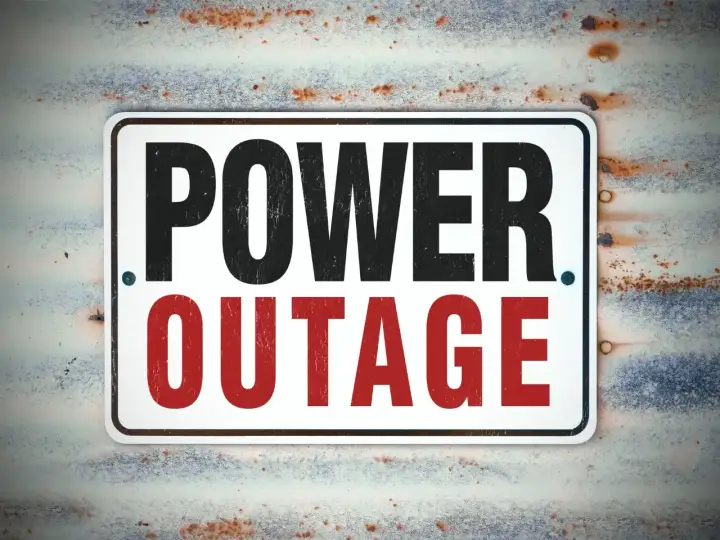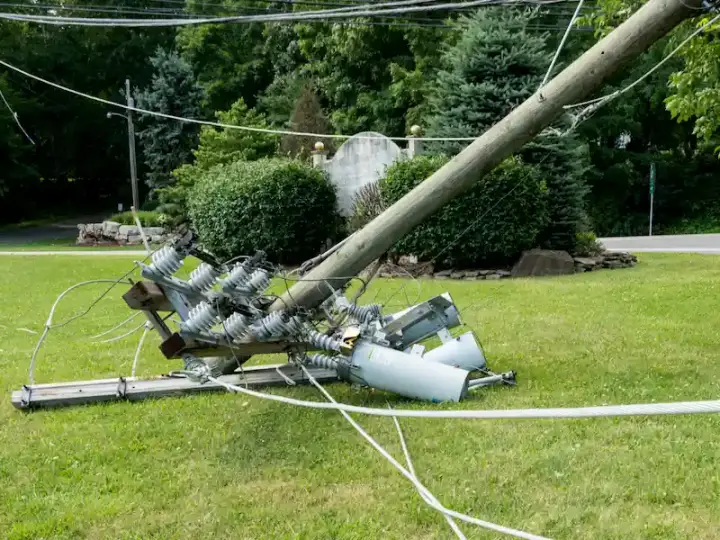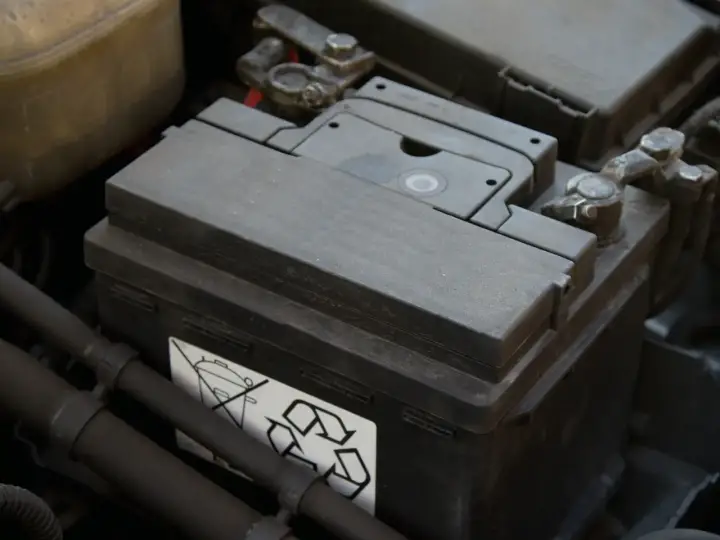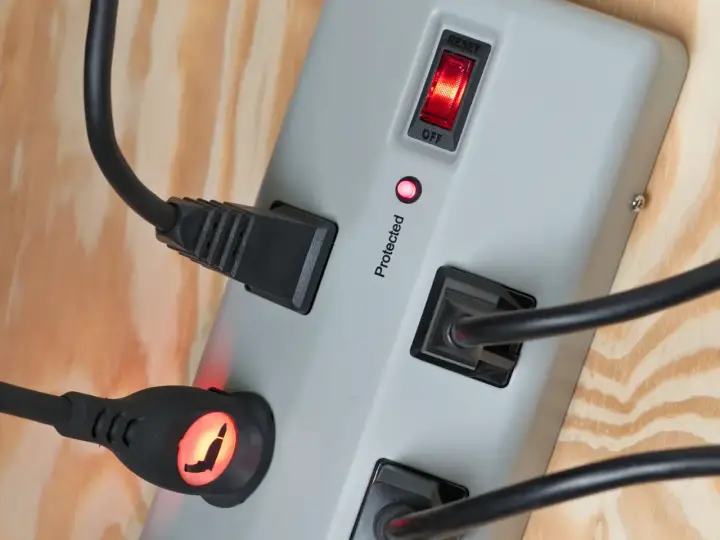Stop Worrying About Smart Home Power Outages With a UPS
Updated on 10th Dec 2020 20:56 in General, Smart
There is no doubt that everyone has experienced some sort of power failure in their lifetime. While power providers have been getting better at maintaining a constant service, situations do arise where it will be interrupted. Sometimes accidents happen and the power will be turned off for safety, and other times severe storms can damage infrastructure. Regardless of the reason, the impact is always the same: you lose power to your smart home. Depending on your setup, this can be a big problem. Let's see how we can fix that.

Disclaimer: This post contains affiliate links. As an Amazon Associate, I earn from qualifying purchases.
Why is losing power a big deal?
This will depend largely on your specific situation, but in most cases, losing power is not good news for a smart home. Obviously, most smart devices will stop working during a power outage unless they are battery operated. That means you won't be able to use the majority of your smart functions anyways. While that isn't always pleasant, it is expected as electronics have always been unusable during a power outage. What isn't expected is that a sudden loss of power could corrupt controllers or unpair certain devices which can result in problems that last longer than the outage.
Take the example of WiFi smart bulbs; some of them are prone to reset themselves if the power goes out a certain way. While we can't speak for what is going on inside the device, the reset sequence usually involves turning the power on and off in a specific way which could be what the fluctuation in power is simulating. While one bulb doing that is a bit of a pain, an entire house worth's of bulbs might take all day to fix! Smart homes are supposed to help make your day to day life easier, not suddenly throw a day's worth of work at you with no notice. A solution here is mostly to try and find products that either has a button to reset or a complex sequence that would be difficult to perform accidentally.
As bad as it is to have to go around every bulb and pair it again, there are worse things that can happen. Take, for example, the smart hub or controller that runs the entire operation. A controller is just a small computer that is configured for the specific task of running your home. As many will know, computers do not like to suddenly lose power, despite that modern computers have adapted to handle it decently well, in the wrong circumstances it can still result in disaster. The Raspberry Pi is a small computer that is about the size of a credit card that is often put up to this task. If you have ever used one, chances are you know that they really don't like losing power.
My controller used to be a Pi running Home Assistant, which worked quite well until one day power was suddenly lost, instantly corrupting the operating system. It had lost power before without much issue, but then suddenly and without warning, it failed completely. That situation caused me a lot of pain on the day it happened, requiring me to drop everything and rebuild my controller with a moments notice. While I mention the Pi specifically, don't think that a commercial hub is too different. Many of them use similar computers inside which could become damaged, though they may be more resilient. How can we prevent this? The answer is a UPS.

What is a UPS?
An Uninterruptable Power Supply is a system that specializes in maintaining power to its outputs, regardless of what is occurring at the input. In most situations, the input will be the power coming in from an electrical socket in the wall, which is provided by the local power grid. Looking at one, you may notice that they are often fairly bulky, which is a direct result of the massive Lead Acid battery located inside each one. While these are indeed the same as in most cars, they are actually much smaller, which allows the unit to be more compact. Many models will use a battery pack, which is a combination of multiple batteries connected with a cable and held together with a strong sticker.
The UPS will carefully monitor the input voltage, and the second it detects a problem it will switch to the internal battery power, restoring a clean source of energy. This is called a Standby UPS, which is the most basic kind and usually what consumers will want to use. Other types will use various tactics to eliminate the very noticeable transition from mains to the battery, as some susceptible equipment might malfunction. A UPS will then use an inverter to generate AC power on the output from the DC power provided by the battery. Different types of inverters vary greatly in cost, with a true sine wave being the most expensive and a simulated sine wave the cheapest.
You will get away with using a simulated sine wave for most situations, but for highly sensitive or expensive equipment, I would always recommend using a true sine wave. The UPS will also come in a variety of sizes, where the rating will usually specify how many Watts it can handle. Be sure to verify with the spec sheet how long it is estimated to operate at full load, as that will give you an idea of how long you can expect it to last. They usually won't last much longer than about 5-10 minutes, but that is enough to shut the system down correctly or for the power to be restored. Where I live, the power rarely completely goes off, but quick "blips" are much more common and can still cause equipment to power down. A UPS is perfect for those situations as it will keep everything running along as if nothing happened!

UPS features
A good UPS will come with several additional features that aren't always advertised as existing but can be really useful for a smart home. The following are just two of them, so be sure to read the manual if they interest you as there are likely many more interesting features, power monitoring being one of them.
Shutdown warning
All but the cheapest UPS will come with a shutdown warning system either over the network or via a provided USB cable. The idea is simple: as the UPS reaches lower battery levels, the system will alert relevant computers of the current status. This allows the computers to continue operating until the situation is critical (at say 40% battery) where it will begin shutting down. When the computer manages to shut down safely, data loss and corruption can be avoided. This technology is almost always used with servers to ensure they remain operational for as long as possible and to prevent data loss.
Another interesting feature is the ability to be notified when the power goes out as the system can send you a notification before everything has to power down. If that interests you, be sure to have your router and modem on a UPS as well, as there won't be any way for a message to be sent if those aren't online! Those using a Raspberry Pi can easily use the shutdown warning to power down the controller before the power is lost. Other hubs may or may not have this feature, but regardless it is still useful to put them on a UPS to prevent unnecessary downtime. You could always make an automation to shut down the controller based on the current battery percentage.
Surge protection
So far we have been focused mostly on the battery backup aspect of a UPS, and rightfully so, it is an amazing feature. They also serve other purposes though, one of which is surge protection. You have probably heard of surge protectors before as they are quite popular, especially for sensitive electronics. They will usually look like a power bar but with some extra lights and ports that are used to protect against surges. Surge protection is actually a crucial feature that could save all of your equipment one day. A surge is an unexpected flow of electricity caused by back-flow somewhere in the system. It could be caused by turning on the hairdryer (to a minor degree) or by lighting striking a transformer (major damage).
Massive surges, such as the ones caused by lighting, are the reason we need surge protectors. Without them, any electronics plugged into the wall would likely be fried. There are situations where people have had everything that plugs into the wall destroyed by a surge, so don't become another victim and be sure to have a surge protector! Even appliances like refrigerators aren't safe as they contain electronics that could be damaged by a surge. Unfortunately, you can't use a surge protector on everything as some appliances will overload them. Be sure to protect your equipment as much as possible, though!

What UPS should you use?
Here we will list a few decent UPS' that you can use to keep your equipment safe. We will present a budget option, a mid-range, and a high-end option. Keep in mind that the major differentiating factor with a UPS is the rated wattage, so you may actually need a high-end device to keep devices such as your computer safe.
Budget - APC UPS 600VA
The APC UPS 600VA Battery Backup & Surge Protector is a smaller sized UPS designed for less power-hungry devices, such as your router or modem. It isn't the best UPS by any stretch, but it will certainly get the job done for less than 80$, which is an amazing achievement. It features 5 battery backup plugs with 2 surge-only, which are useful for accessories that can handle suddenly losing power. It has a 23 minute estimated run time at 100 watts and can handle a maximum of 330W. It is also the only model listed here that has a "power bar" form factor, which is just to say it is shaped similarly despite it being bulkier.
Check out the APC UPS 600VA on Amazon!
Mid-Range - APC UPS 1000VA
The APC UPS 1000VA Battery Backup & Surge Protector is a bit fancier than the previously mentioned budget option. Having used this model multiple times for my own equipment, I can personally say it does exactly what is advertised and works great! It features 6 battery backup outlets and 4 surge-only. It has a 43 minute estimated run time at 100 watts and can handle a maximum 600W. An interesting feature is a little screen on the front of the device, providing plenty of information directly without any external software as with the budget model. Additionally, for those who want to silence the alarms, there is a silence button right on the front dedicated to this purpose.
Check out the APC UPS 1000VA on Amazon!
High-End - CyberPower 1500VA UPS
The CyberPower 1500VA UPS is similar to the APC 1000VA, featuring a screen in the same place and many of the same buttons allowing for much the same kind of control. It also features 6 battery backup outlets and 6 surge-only and has a 10 minute run time at half load (500W) while handling a maximum of 1000W. The high wattage of this UPS makes it perfect for use with a big computer or many smaller smart home devices, such as a PoE (Power over Ethernet) hub. That way, you can power the smart hub and any device powered via the network, such as cameras or access points.
Check out the CyberPower 1500VA UPS on Amazon!
Summary
Overall, there are a lot of different options when it comes to picking a UPS. The biggest distinction between models is typically the maximum wattage, though the type of UPS could also be a factor. I have personally used both the APC 1000VA and the APC 1500VA with great success, and I would always recommend them. To make the information easier to see, here is a table that summarizes everything said previously.
| Feature | Budget | Mid-Range | High-End |
|---|---|---|---|
| Model | APC UPS 600VA | APC UPS 1000VA | CyberPower 1500VA UPS |
| Maximum Wattage | 330W | 600W | 1000W |
| Screen | No | Yes | Yes |
| Run Time* | 23 min @ 100W | 43 min @ 100W | 10 min @ 500W |
| Price | $ | $$ | $$$ |
| Recommended for | Small devices: routers, modems | One computer or many small devices | One powerful computer and many accessories |
| Details | APC UPS 600VA Details | APC UPS 1000VA Details | CyberPower 1500VA UPS Details |
* Run time is not a linear function. A time of 10 minutes at 100W does not mean a time of 20 minutes at 50W. Be sure to consult the product specifications before purchasing if the time at a certain level is important to you.






